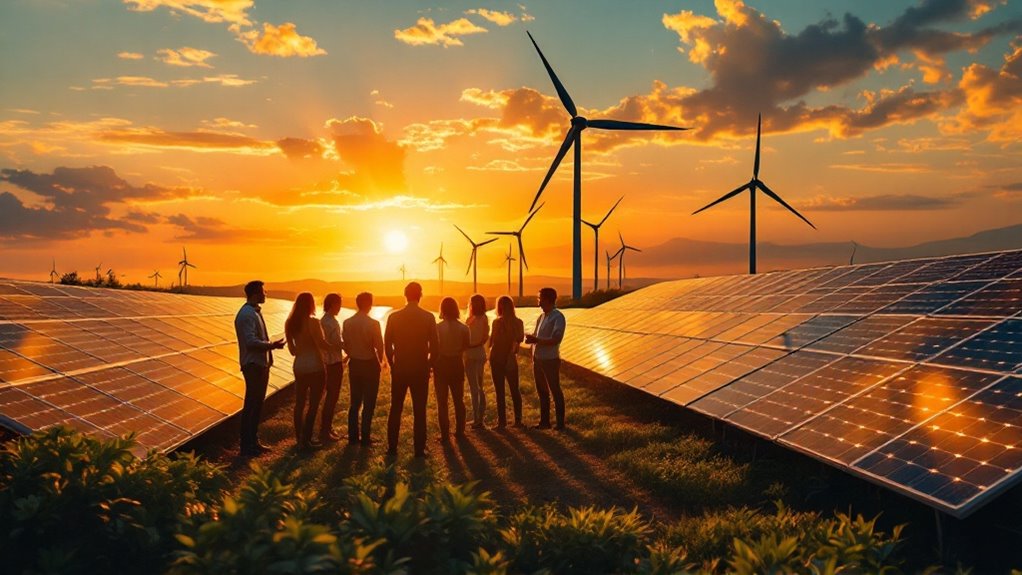You might think sustainable investments are just a passing trend, but they're rapidly becoming a cornerstone of future markets. As you consider the shifting landscape of finance, it is crucial to recognize how these trends not only align with growing consumer expectations but also drive substantial economic opportunities. The integration of ESG factors is reshaping investment strategies, especially with emerging sectors like clean energy gaining traction. What does this mean for your investment strategies moving forward? Understanding the implications could redefine your approach to market opportunities in ways you might not expect.
Key Takeaways
- A significant 73% of financial professionals foresee substantial growth in sustainable investing within the next 1-2 years, indicating strong future market potential.
- ESG-focused investments currently total $6.5 trillion, reflecting a robust commitment to sustainability among investors.
- The rise in Community Development Finance Institutions (CDFIs) highlights increased demand for economic equity and access to capital in underserved communities.
- Investment strategies increasingly prioritize renewable energy, with projections for sustainable bonds to exceed $1 trillion by 2025.
- 81% of investors now integrate ESG factors into their strategies, driving a shift towards more responsible investment practices in future markets.
Overview of Sustainable Investment Growth
As sustainable investing continues to gain traction, it's clear that a significant shift is underway in the financial landscape.
The sustainable investment market is set to grow, with 73% of financial professionals expecting this change in the next 1-2 years. Currently, ESG-focused investments total $6.5 trillion, showcasing a robust commitment to climate change initiatives.
Private equity is witnessing increased demand, particularly as Millennials express strong interest in sustainable investment opportunities.
Furthermore, the surge in assets of Community Development Finance Institutions highlights a growing emphasis on economic equity and sustainability in underserved communities.
With clean energy shifts at the forefront of market trends, it's evident that aligning investments with Sustainable Development Goals is becoming essential for future success.
Importance of Stewardship Practices
Stewardship practices play an essential role in the sustainable investment landscape, ensuring that corporate strategies align with environmental, social, and governance (ESG) objectives.
With stewardship policies covering 79% of US market assets, amounting to $41.5 trillion, corporate engagement is critical for sustainable investing.
By actively implementing these practices, you can drive transparency and accountability within corporations, mitigating risks related to governance and sustainability.
Shareholder advocacy stands out as a significant mechanism for promoting ESG alignment, enhancing accountability, and creating long-term value for both investors and stakeholders.
Emphasizing effective corporate engagement strategies not only aligns companies with ESG goals but also paves the way for a more sustainable future, benefiting everyone involved.
Your participation can make a real difference.
Climate and Clean Energy Focus

With climate change driving investment strategies, a strong focus on clean energy shifts has taken center stage.
Investors are prioritizing renewable energy and sustainability, recognizing the urgent need for an energy transformation. The clean energy sector is set to grow considerably, fueled by technological advancements and rising demand for green mobility and energy storage solutions.
To meet the projected spike in demand for critical minerals necessary for renewable technologies, an estimated $70 billion in annual investment will be required by 2030.
In addition, the issuance of sustainable bonds is expected to surpass USD 1 trillion by 2025, reflecting a commitment to ESG and sustainability.
Embracing sustainable finance now is essential for securing a greener future and maximizing investment returns.
Evolving Investment Strategies
While the investment landscape continues to shift, many investors are increasingly integrating ESG factors into their strategies. About 81% of you're embracing ESG integration, and 75% utilize exclusionary screening, with fossil fuel exclusions leading the charge. This reflects a significant movement towards sustainable investing trends.
As asset managers, you're likely noticing that 62% of firms apply five or more negative screens, aiming for stricter ethical standards. Furthermore, with 36% of you focusing on impact investing and sustainability-themed strategies, the emphasis on low-carbon solutions is clear.
However, challenges like political rhetoric against ESG and worries about greenwashing highlight the need for improved data quality and analytics. It's essential to adapt your investment strategies to navigate this evolving landscape effectively.
Role of Community Development Finance

The integration of sustainable investment strategies is reshaping the financial landscape, and Community Development Finance Institutions (CDFIs) are at the forefront of this movement.
With assets soaring 615% since 2014, totaling $458 billion in 2023, CDFIs are essential in enhancing economic equity. As an investor, you'll find they focus on underserved communities, providing vital access to capital for small businesses and individuals.
Your financial advisor can guide you in exploring diverse asset classes, from microfinance to renewable energy projects, which contribute to sustainable community development.
By investing in CDFIs, you're not just supporting financial growth; you're nurturing social equity and resilience.
Upcoming insights from the US SIF Special Focus Report in 2025 will further highlight their impact in public and private markets.
Addressing Water Scarcity Challenges
As global water demand surges, the projected 40% supply-demand gap by 2030 underscores the urgent need for sustainable water management solutions.
You can play a role in addressing water scarcity challenges by exploring investment opportunities in innovative companies focused on climate change mitigation.
Sustainable practices in water management not only enhance agricultural resilience but also protect human health amid increasing risks.
These practices create significant economic benefits and improve overall societal resilience.
By supporting technologies that effectively tackle the impending water crisis, you contribute to a healthier environment.
Together, we can encourage innovation that addresses these challenges head-on, ensuring that future generations have access to the essential water resources they need.
The time for action is now.
Trends in Clean Energy Investments

With clean energy investments poised for explosive growth, you'll want to pay attention to emerging trends shaping the industry. The demand for renewable energy, especially in solar and wind sectors, is skyrocketing.
To support this energy shift, an estimated $70 billion in essential mineral investments will be critical by 2030. Private markets are stepping up, with impressive returns of 123% over five years on green mobility and renewable electricity investment products.
As climate action gains urgency, effective land use becomes important, given that hydropower and solar require far more land than fossil fuels. This change towards environmental and social responsibility means investors like you can play a key role in sustainable progress while capitalizing on emerging opportunities.
Future of ESG Regulations
While many companies are gearing up to meet new standards, the future of ESG regulations is set to reshape how businesses prioritize sustainability.
The EU's Corporate Sustainability Reporting Directive, effective in 2024, will impact over 50,000 companies, driving a focus on transparency in sustainability disclosures.
Trends show that anticipated changes from the Sustainable Finance Disclosure Regulation review in 2025 will notably affect ESG policies in private markets.
However, the potential rollback of ESG initiatives in the U.S. poses challenges for credibility.
New ESG fund-naming guidelines aim to reduce greenwashing risks, with an expectation that 30-50% of EU ESG funds will change names by mid-2025.
As these regulations evolve, they'll influence investment products and corporate strategies alike.
Frequently Asked Questions
What Are the Trends of Sustainable Investing?
You'll notice trends like green bonds and impact investing gaining traction. Investors prioritize ESG criteria, focusing on renewable energy and a circular economy. Social responsibility and climate risk considerations are shaping decisions in sustainable investing today.
What Are the 3 Key Macro Trends Driving Sustainable Investing?
You'll find three key macro trends driving sustainable investing: green finance prioritizing renewable energy, impact measurement enhancing corporate responsibility, and ESG regulations addressing climate risk, all fueled by growing investor activism demanding accountability and transparency.
What Are the Top Investment Trends in 2025?
In 2025, you'll see a surge in green bonds, impact investing, and renewable energy projects. Companies prioritizing ESG criteria will thrive, while social responsibility and a circular economy will reshape climate finance strategies for a sustainable future.
Is Sustainable Investing the Future?
You'll find sustainable investing's the future as you adopt ESG integration. By prioritizing impact measurement, ethical portfolios, green bonds, and climate finance, you enhance social responsibility and support sustainable agriculture for a better tomorrow.
Conclusion
In a world where investors chase profits like a dog chases its tail, it's ironic that sustainable investments are leading the pack. By prioritizing ESG factors and clean energy, you're not just securing your financial future; you're also contributing to a healthier planet. As Millennials push for economic equity, it's clear that aligning your investments with these values isn't just smart—it's essential. Accept this shift, and you might just find that saving the world is the best investment of all.
